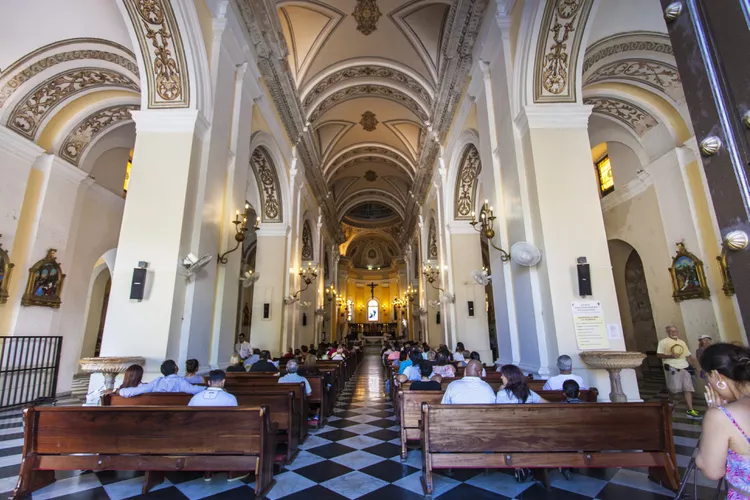Catedral de San Juan Bautista: A Historic Landmark
The graceful Catedral de San Juan Bautista, or Cathedral of Saint John the Baptist, is a can’t-miss historic landmark in the heart of the old city. The church is located at Calle del Cristo #151-153, just across from the beautiful El Convento Hotel. Visitors can make an optional donation for admission.
The cathedral holds mass on Saturdays at 7 pm, Sundays at 9 and 11 am, and weekdays at 7:25 am and 12:15 pm. It remains open daily from 8 am to 4 pm (until 2 pm on Sundays).
Highlights of the Catedral de San Juan Bautista
When visiting the cathedral, don’t miss the following highlights:
- The tomb of Ponce de León
- The mummy of St. Pio
- The stunning stained glass windows
If you happen to be in Puerto Rico over Christmas, try to attend the Misa de Gallo, held on December 24 just before midnight. This event includes enactments of the Nativity scene and showcases the cathedral adorned in its Christmas splendor.
:max_bytes(150000):strip_icc():format(webp)/puerto-rico--old-san-juan--view-of-catedral-san-juan-bautista-200544561-001-5c3f87fdc9e77c00014a2186.jpg)
A Unique Religious Landmark
The Catedral de San Juan Bautista is Puerto Rico’s grandest religious building, making it an important part of the island’s history. It is the second oldest church in the Western Hemisphere and the oldest church on U.S. soil, with its origins tracing back to 1521, during the early days of Spanish colonization.
The structure you see today was built in 1540 after the original was destroyed by a hurricane. Its elegant gothic façade developed over centuries, showcasing the architectural evolution of the church.
Throughout history, the cathedral has faced many challenges, including robberies and natural disasters. Notably, in 1598, forces led by the Earl of Cumberland looted the city and the church. In addition, a hurricane in 1615 caused significant damage, leading to repairs that further shaped its appearance.
The cathedral’s location on Cristo Street is strategic, as it was a primary stop for travelers arriving by boat. Sailors would stop to express gratitude for a safe voyage upon their arrival.
In terms of its rich heritage, the cathedral is home to the final resting place of Spanish explorer Juan Ponce de León, known for his quest for the Fountain of Youth. Though he himself may not have lived long on the island, his legacy remains influential. Ponce de León’s remains were relocated to the cathedral in 1908, where they rest in a white marble tomb.
Another notable feature of the cathedral is the wax-covered mummified remains of St. Pio, a Roman martyr. Encased in glass, this relic offers a unique, if somewhat eerie, sight for visitors.




